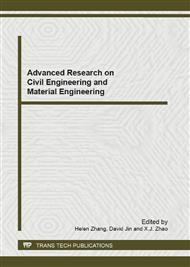[1]
Rinkinen, M., Jalavai, K., Westermarck, E., Salminen, S.,&Ouwehand, A. C.. "Interaction between probiotic LAB and canine enteric pathogens: a risk factor for intestinal Enterococcus faecium colonization". Veterinary Microbiology,Vol.92, pp.111-119,2003.
DOI: 10.1016/s0378-1135(02)00356-5
Google Scholar
[2]
Tiina Mattila-Sandholm and Maria Saarela. "Functional dairy products", CRC Press, 2003.
Google Scholar
[3]
Harsharnjit S. Gill bvsc, mvsc. Probiotics to enhance anti-infective defences in the gastrointestinal tract. Research Clinical Gastroenterology, Volume 17, Issue 5, October 2003, Pages 755-773
DOI: 10.1016/s1521-6918(03)00074-x
Google Scholar
[4]
Lori Kopp-Hoolihan. Prophylactic and Therapeutic Uses of Probiotics: A review. Journal of the American Dietetic Association, Volume 101, Issue 2, February 2001, Pages 229-241.
DOI: 10.1016/s0002-8223(01)00060-8
Google Scholar
[5]
Nancy Toedter Williams. Probioitics. Am J Health-Syst Pharm.Vol 67 (2010),pp.449-459.
Google Scholar
[6]
TANNOCK G W . Probiotics and Prebiotics:Where Are We Going?, Wymondham,Caister Academic Press,(2002)
Google Scholar
[7]
Yuan-Kun Lee (2009). Rev. ed. of: Handbook of probiotics 2nd ed.. Hoboken, N.J. : John Wiley & Sons. p.441–443.
Google Scholar
[8]
Djamel Fahloul, Miloud Lahbari , Houcine Benmoussa and Samir Mezdour. Effect of osmotic dehydration on the freeze drying kinetics of apricots. Journal of Food, Agriculture & Environment Vol.7(2):117-121.2009.
Google Scholar
[9]
Leslie S.B., Israeli E., Lighthart B., Crowe J.H., Crowe L.M., Trehalose and sucrose protect both membranes and proteins in intact bacteria during drying, Appl. Environ. Microbiol. 61 (1995) 3592–3597.
DOI: 10.1128/aem.61.10.3592-3597.1995
Google Scholar


